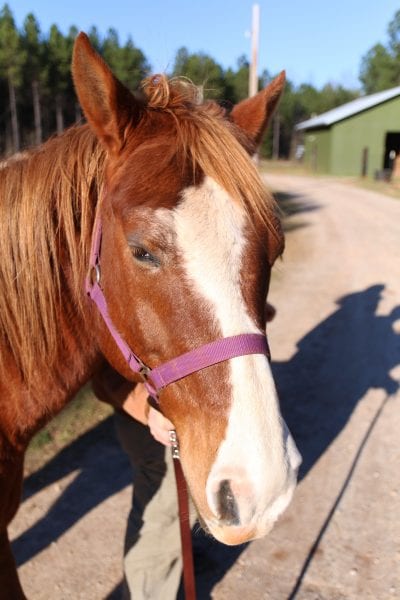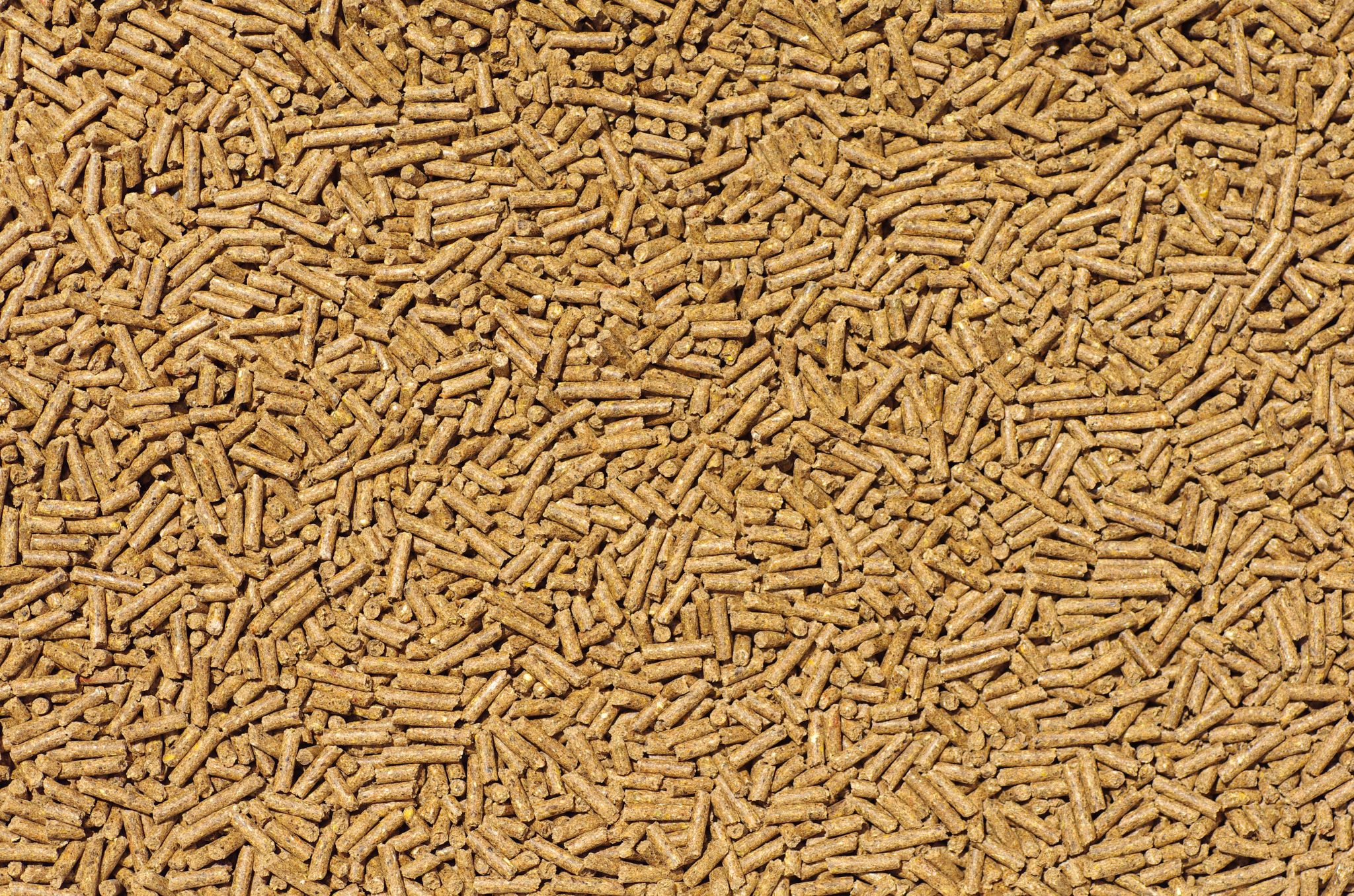Farming

Commercially produced concentrates have simplified feeding programs for many horse owners. Some still choose to mix their own combination of grains, protein sources, and minerals, therefore it is crucial to understand the feed composition to provide balanced diets for animals.
Commercial concentrates can help manage feeding costs, reduce time and labor inputs at feeding, and decrease the risk of potential mixing errors compared to mix-it-yourself feeds. There are a variety of commercial concentrates available on the market today, so it is important to be able to read feed tags to determine the right feed for your particular horse or operation.
Feed tags are attached to every bag of feed, and many regional and national feed companies now provide the same information on their websites. Tags contain vital information such as the product net weight, guaranteed analysis, list of ingredients, and instructions on how to use the product for best results. The first part of the feed tag lists the manufacturer, type of feed, and types of animals for which the feed is formulated.
The guaranteed analysis contains information regarding the amounts of specific nutrients that the feed contains. By law, all feed tags (figure 1) are required to list the minimum crude protein and fat content, and the maximum fiber content. Calcium and phosphorus content is usually noted, though it is not required if the feed contains less than 6 percent of these minerals. Some companies choose to list additional nutrients. Manufacturers are not required to list energy density in most states, and very few include this important piece of information.
Figure 1. Example of a feed tag
| XYZ FEED MILL 12% Pelleted Horse Feed for Gestating Mares, Growing Horses, and Mature Working Horses |
|---|
| Guaranteed Analysis |
Crude Protein, min .......................12.0 %
Crude Fat, min...............................5.0 % Crude Fiber, max...........................8.00 % Calcium, min..................................0.50 % Calcium, max..................................1.00 % Phosphorus, min.............................0.50 % Copper, min...................................30 ppm Selenium, min............................0.30 ppm Zinc, min......................................100 ppm Vitamin A, min......................3,000 IU/LB |
FEEDING DIRECTIONS |
Use the following table as a guide for the amount of feed to be fed per 100 lb of body weight, according to designated horse type. Adjustments in these amounts should be made based upon the quality of the forage (hay and/or pasture) the horse is consuming, size of the horse, and its degree of activity. |
Horse Type Daily Amt./100 lb Body Weight Mature Working 0.5 to 1.25 lb
|
In order to reduce risk of colic, always feed at least 1 to 2 lb of hay per 100 lb of body weight. Also, evenly space feeding times throughout the day, never feeding more than 8 lb of concentrate per meal. |
During periods of hot weather (daily temperatures of 90 degrees or higher) and/or heavy sweating, mix 2 oz of an electrolyte supplement into horse’s daily ration. When changing any feed ingredient (hay or concentrate) make the change slowly to avoid colic. Start by replacing 10% of the diet with the new feed and increase the percentage for the next 1-2 weeks until the horse is eating 100% of the new feed. |
Energy is the first consideration in balancing any equine ration. A horse consuming a very energy- dense concentrate will need to consume fewer pounds of concentrate per day than when it is fed a low energy-density concentrate. Reducing the amount of concentrate consumed allows the horse to eat more forage, which works to promote gastrointestinal health and reduce the risk of colic.
The crude fiber content of a feed can give us a clue about its energy density, as there is an inverse relationship between fiber and expected digestible energy content. Just as commercial feeds with a high fiber content typically contain less digestible energy than those with a low fiber content.
Fat is another source of energy in concentrates. A traditional concentrate usually contains 3 to 4 percent fat, but many feeds now list higher crude fat values in their guaranteed analysis as manufactures add supplemental fat to their formulations. A feed with a minimum crude fat content of 8 percent would be considered an added-fat feed, as it contains 4 to 5 percent supplemental fat. This increases the energy density of the feed, as a concentrate with 5 percent additional fat will have up to 8 percent more energy than a similar concentrate with no supplemental fat.
 Energy is the first consideration in designing a feeding program, but crude protein is often the first nutrient horse owners look for when selecting a specific horse feed. One needs to keep in mind that a concentrate should be selected to complement the forage the horse is consuming. Testing the hay is the best way to determine the nutrient profile of the forage, which will aid in selecting the right concentrate for your horse.
Energy is the first consideration in designing a feeding program, but crude protein is often the first nutrient horse owners look for when selecting a specific horse feed. One needs to keep in mind that a concentrate should be selected to complement the forage the horse is consuming. Testing the hay is the best way to determine the nutrient profile of the forage, which will aid in selecting the right concentrate for your horse.
The energy-to-protein ratio should also be considered when selecting a concentrate. Horse nutritionists keep this ratio in mind when formulating horse feeds, assuming that horse owners are following the feeding instructions on the label. Fat-added concentrates are designed to have higher protein content in order to keep this ratio in balance.
The next section of the feed tag is the list of ingredients. Ingredients are usually listed in order from greatest to least amount in the formulation. Some companies will specifically list the various grains and protein supplements (oats, corn, alfalfa meal) while others use general ingredient categories for these feedstuffs (grain products, plant protein products). The first four or five ingredients will commonly make up the bulk of the formulation, with vitamins, minerals, and flavorings constituting a small portion of the total concentrate.
It is possible that feed designed for another species of livestock may meet the nutrient needs for a horse, such as a creep feed for calves. However, read the label carefully! Feeds that contain ionophores (like Rumensin or Bovatec) or medications are toxic to horses. If the guaranteed analysis matches what your horse needs, and the feed is free of medication, such a concentrate may be a lower-cost alternative to commercial horse feeds.
The final section of the feed tag is the instructions for feeding. This is the manufacturer’s recommendations for using their product to maximize its performance. Note that feeding instructions are written in terms of pounds of hay and concentrate per day—horse feed should be measured by weight, not volume. Read the feeding instructions carefully, as not all horse feeds are designed to be fed alike. A true “complete feed” is one that is formulated to be fed as the horse’s sole source of nutrition and satisfies forage needs. Other concentrates may be designed to be paired with a specific commercial mineral supplement in order to meet the horse’s needs. Still another class of “balancer” concentrates is intended to be fed in very small amounts as they provide a very dense source of protein, minerals, and vitamins designed to complement high forage diets.
Feed according to label instructions in order to prevent nutrient imbalances. Minerals and vitamins need to be provided to horses in specific proportions to each other, as well as in proportion to the energy content. While many people think they can stretch their feed bill by “cutting” their concentrate with oats or other ingredients, this dilutes the energy and protein content of the feed and has the potential to invert the desired ratio of calcium and phosphorus. Adding unnecessary mineral and vitamin supplements to a balanced concentrate can have the same effect, with horses getting too much or too little of a nutrient. The excess minerals and vitamins can block or interfere with absorption of other nutrients. Mixing multiple feeds or improper use of supplements can put the horse at risk for serious health problems, including deficiency or toxicity disorders.
Commercial feeds have simplified horse feeding programs for many horse owners. Selecting the right concentrate for a horse does require a little homework; the owner should understand his or her horse’s nutrient needs before going to the feed store. Understanding the nutrient contributions of the horse’s forage source can help in selecting the right concentrate. Following the instructions on the tag helps ensure the horse gets the maximum benefit out of your purchasing decision.
References
Evans, J. W. 2001. Horses: A Guide to Selection, Care and Enjoyment, 3rd ed. New York: W. H. Freeman.
National Research Council. 2007. Nutrient Requirements of Horses, 6th rev. ed. Washington, DC: National Academies Press.
Download a PDF of Reading the Feed Tag, ANR-1354.


